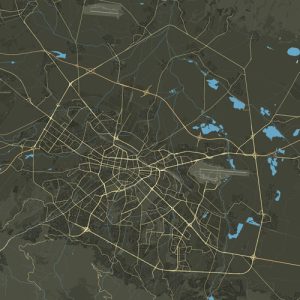The Varosha quarter was established in the city of Gorna Jumaya in the Renaissance era, with the “Vavedeni Bogorodicno” church as its central location. Varosha was the only Bulgarian neighborhood out of a total of five neighborhoods in the city in the first half of the 18th century.
in terms of its architectural silhouette and structure, Varosha does not differ from the neighborhoods with the same name in other Bulgarian cities. The buildings built at the beginning of the 19th century are often one-story, with small windows to the yard, the fashion for decorating the outside of the houses artistically – with drawings – today there is such a preserved house – known as the Moštanska house. Varosha quarter was restored in the 80s of the 20th century and has preserved its spirit and style and has become a cozy and attractive place for tourists – here are housed the schools of the Arts Center, the United Children’s Complex, here are the studios of the Blagoevgrad artists, small restaurants can accommodate tourists for rest and a delicious meal.
The Church of the Introduction of the Virgin is a national cultural monument.
The construction of the “Vavedeni Bogorodicno” church began in 1840 and ended in 1844 with the voluntary help of the Bulgarians from the city. In the 50s of the 19th century, the new secular school was built in its yard.
Architecturally, the church in Gorna Jumaya is a three-nave pseudo-basilica. The painting of the church was carried out in several stages. After 1879, the Bulgarians in Jumaya specially invited painters to paint the walls in the spirit of tradition. The church is the work of master-builders from the village of Stoimirovo, Maleshevsko and the voluntary work and sacrifices of all Bulgarians from the town and surrounding villages. The murals are the work of painters from the Bansk Art School – Mihail Golev, Dimitar Sirleshtov, Kosta Marunchev.
The predominant part of the icons are the work of masters from the Bansk and Samokov Art Schools. The iconostasis was made in the likeness of the one in the church in the Rila monastery, and although inferior to it in terms of size and grace, it ranks among the best and most interesting examples of Bulgarian woodcarving art from the Renaissance era by carvers from the Samokov and Debar schools of art. which makes it a valuable example of Bulgarian church carving. The ceiling was made by masters from the Debar art school. Regarding some architectural elements and the zography of the church, some restoration works were carried out in the 80s of the 20th century. In the courtyard of the church there is a monument to Major Nikolay Pavlovich Orlinsky, commander of the Russian military unit that carried out the first liberation of Gorna Jumaya on February 12, 1879, installed in 1978. In 1986, the Memorial of the Delchev family, which is also located in the temple courtyard, was started and completed in 1987.
Work time:
Working hours:
08:00 – 18:00
Contacts:
phone: 073884794;

